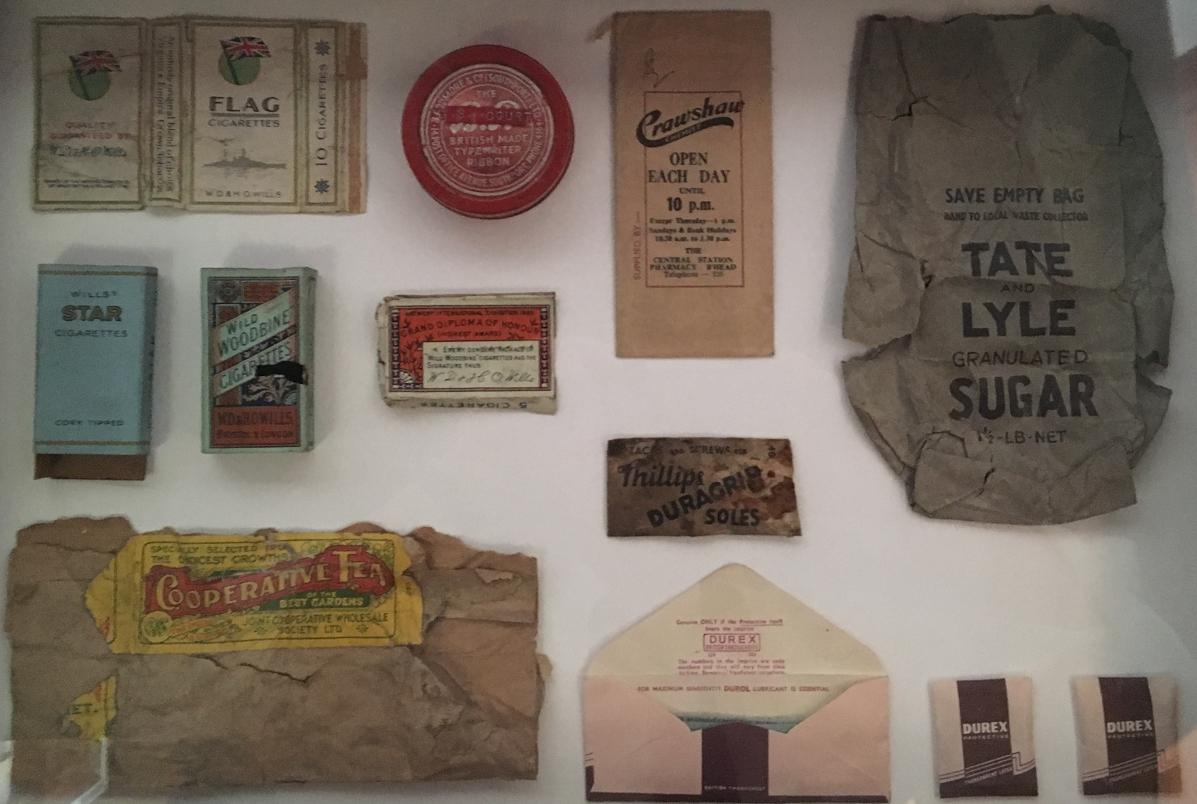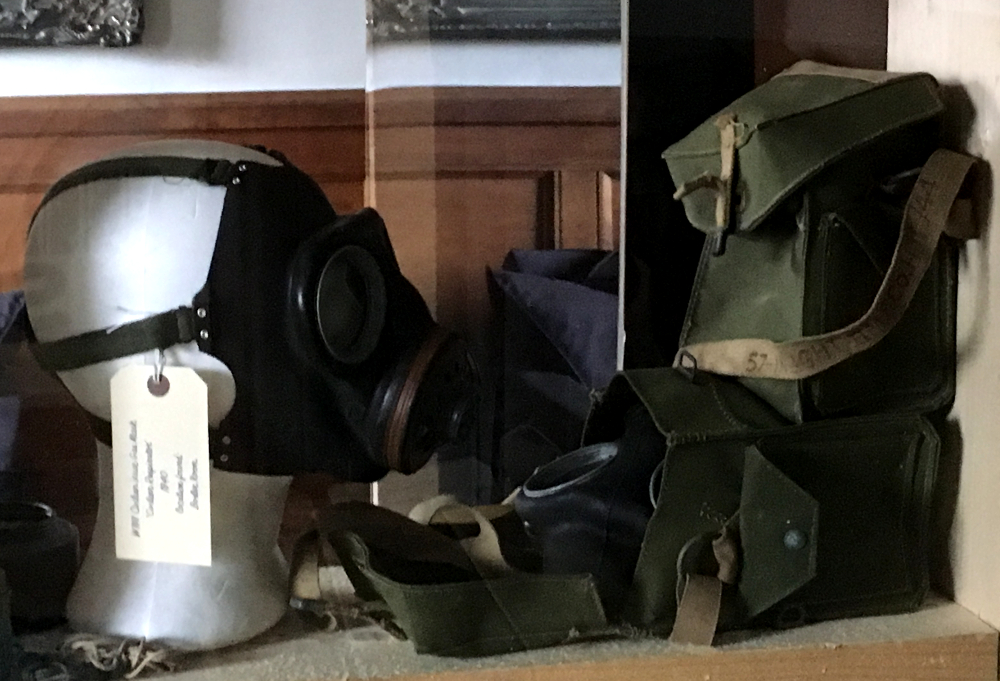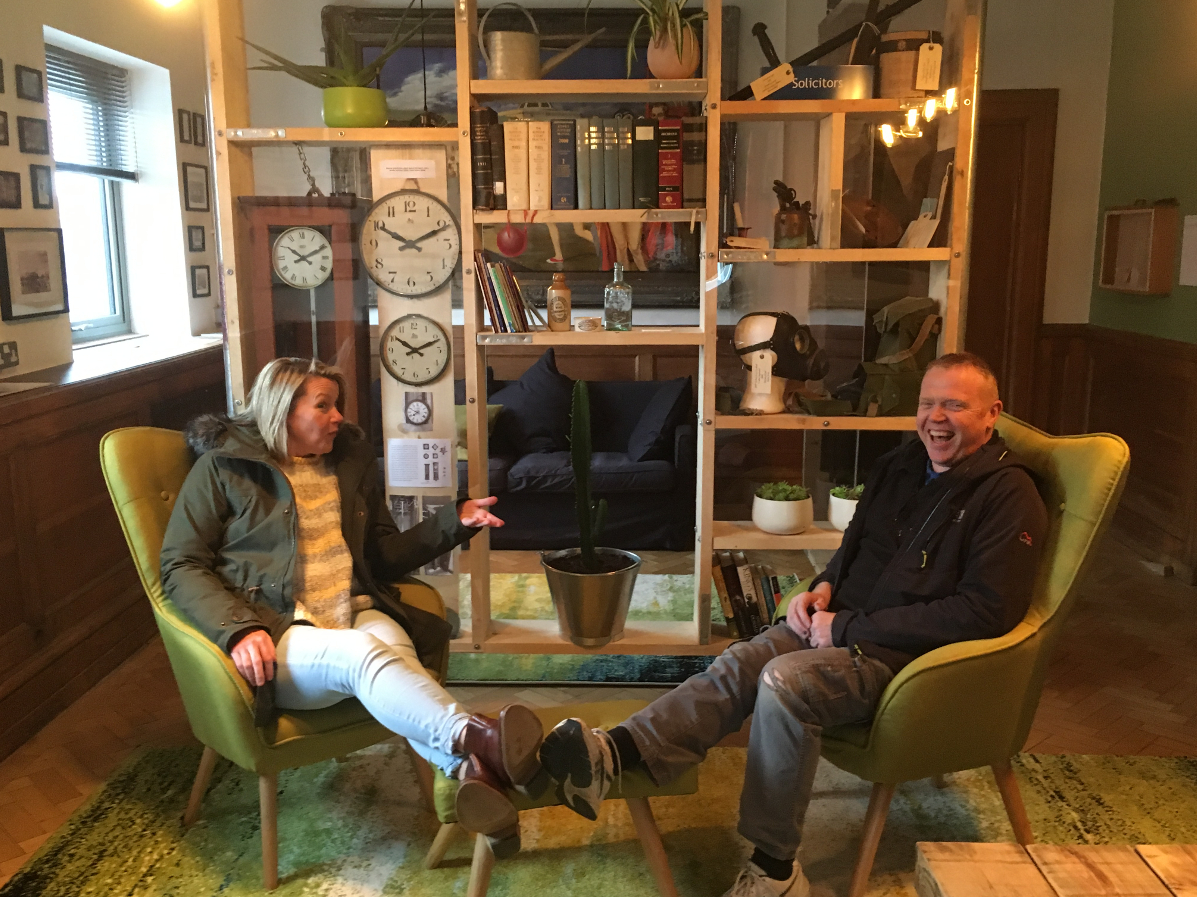

When the pandemic hit and the country went into lockdown, businesses (small businesses and those in retail & hospitality in particular) had to make some hard decisions in order to survive.
Those decisions were made in a vacuum, nothing like this had happened in most people’s living memory, no one knew what to expect; how long lockdown would last, what would be allowed and when, what support would be available, would it be enough and what would the world look like as restrictions started to get lifted.
People, unfortunately, were made redundant as organisations tried to guess at what measures were needed to give them the best chance at survival, others were put on the furlough scheme when it became available and others, where possible, were given the wherewithal to work from home.
Those that were made redundant immediately started looking for other jobs or made the decision to start their own business. Those on furlough found they had a lot of free time on their hands and for some thoughts turned to what direction their career should take with regards to employment and working patterns that best suited the lifestyle they wanted post pandemic. And many of those given the capability of working from home found it better suited their lifestyle and looked for options that offered them this working solution.
The pandemic caused massive disruption to the UK’s workforce in many sectors with a legacy of recruitment problems further down the line.
For some organisations the pandemic was the start of the perfect storm as they lost experienced employees, added to this, many non-UK workers who returned home either couldn’t (Brexit) or didn’t want to return back to the UK to work. And, even though there were some good things in the autumn budget, especially for Retail & Hospitality, the minimum wage increase has the ability to cause further financial headaches especially for small businesses.
Recruitment difficulties have been hitting the news as the country starts to open up again with logistics and shortage of HGV drivers being a prime example. However, there are many other sectors struggling in the background – we have seen it especially with businesses that do data collection and there are no easy answers. Employment is high compared with predictions made at the start of the pandemic and few exceptions for migrant workers are being made to cover the gaps.
Some companies are increasing their salary offers to attract candidates, taking a hit to the bottom line and in effect robbing Peter to pay Paul and putting the problem on another organisations doorstep.
Businesses could take into account the new working practices that future employees or newly established contractors want to live with. When thinking of promotional activity, by identifying the right venues for promotions, organisations can match peak footfall with employee availability and target audience.
Organisations need to, within limits, do whatever they can do to retain staff and make working patterns as attractive as possible; working around school hours and holidays, part time or shift work to fit in as a second job or work around university lectures or join the work from home/zoom meetings movement. Businesses will have tried every channel going as part of their recruitment drive – however, going direct to the public, may still be an option. And, for those that are doing data collection, when engaging the public, a secondary need could turn the conversation to recruitment if the person shows the right attitude.
Do I need a ‘ground source heat pump’ … I don’t rightly know!Do I need a ‘ground source heat pump’ . . . I don’t rightly know!
The term ‘ground source heat pump’ sounds Jules Verne’esque to me … as if it was part of the machine taking him on the Journey to the Centre of the Earth! But it is a term that is starting to smack me across the face as it starts to get mentioned more and more.
I was recently buying a new replacement boiler and as part of researching which one to buy, bits and pieces mentioning ground source heat pumps started to appear. Apparently the UK is moving away from gas boilers and as of 2025 renewable heating systems will be used in all new build homes. As much as I would have liked to move to a renewable heating system I had too many questions I couldn’t find the answers to and it looked like the cost of installing the new system was well outside my budget. Did I want a vertical or horizontal system? was my back garden big enough to produce enough heat? How much space did I need in the house? Could my back garden run out of heat? (apparently it can temporarily?) what happens if it does? How easy are they to install in a 60’s built house? Will my back garden be destroyed? How often do they need to be replaced? And, will the money I save on heating bills ever outweigh the cost of installation?
Unfortunately there were too many unanswered questions and too much cost – I went with a highly efficient condensing boiler. Since getting my boiler fitted I have stumbled across a few answers (which may or may not be correct) – you need 40m x 12m of land to install the pipes or the ability to have a 60 – 200m bore hole drilled, the ‘unit’ is about the size of a fridge-freezer, the system lasts about 20 years, cost £12,000 to £25,000 and I would have had to spend money on insulating the house to make the system efficient. I know now I couldn’t have fitted a ground source heat pump
However, I did go on a guilt trip – for me, Climate Change became real this year and with kids and grandkids I want to do as much as I can to ensure there is still a planet worth living on in years to come. The UK is committed to reducing emissions to zero by 2050 and phasing out the use of fossil fuels is an important part of that commitment.
There is a Government grant to support renewal of heating systems (RHI) which ends March 2022. The new Government initiative (Heat and Buildings Strategy) starts April 2022; there is a pot of £450m and they are giving grants of £5,000 to install heat pumps (air or ground) to make the cost competitive/similar to installing a new gas boiler. The fund will provide grants for 90,000 installations.
The public are seeing record breaking temperatures around the globe, forest fires destroying vast swathes of land, floods and weird weather patterns. And, if like me, people are open to conversations about how we can do our bit.
If ever there was a time and place for an industry to step up and engage the public it is now. If someone from the industry had spoken to me and answered the questions I had it is quite possible I could have made my decision based on facts instead of “I don’t know what I don’t know”
Yes, there is information on the internet but it isn’t in one easy place to find – or it wasn’t for me! And there are other systems which when thrown into the mix make it all a little more confusing – biomass, air source heat pumps, solar panels, etc – do you need to mix and match?
And then you spot something saying the government is looking at Hydrogen for heating and the research should be concluded by 2026!
This could be the time and opportunity for the green industries to hit the promotion trail and get engaged with the public.
Introducing Liverpool Shopping ParkLiverpool Shopping Park appoints Access Point as commercialisation partner
Introducing Liverpool Shopping Park. Liverpool Shopping Park has appointed Southport-based Access Point as their exclusive commercialisation agents.
Liverpool Shopping Park is located on Edge Lane – one of the major gateways into the city centre – and is home to high profile brands including Next, M&S Food Hall, River Island and H&M as well as the world’s largest Liver Bird.
As commercialisation agents, Access Point will help to attract additional kiosk-based vendors such as barbers, street food retailers and coffee vendors to trade from Liverpool Shopping Park’s public areas, pavements and 1500-space car park.
David Robertshaw, ceo, Access Point said: “We are delighted to be working with Liverpool Shopping Park especially at this stage in its development. Already the largest shopping park in Liverpool, it is a fantastic venue for local, national and global brands to promote their services to the people of this amazing city.”
Peter Gilliland, Head of Property Management at The Derwent Group, which owns Liverpool Shopping Park, said: “We’ve appointed Access Point as our commercialisation partner to help enhance the customer experience and increase dwell time. Their expertise and support will be instrumental in bringing the right traders and opportunities to the park and complementing the strong retail and leisure brands we already have on offer.”
About Access Point
Established in 1997, Access Point are a specialist in delivering proven commercialisation and advertising opportunities for venues and companies wishing to capitalise on their assets, increase their brand awareness, generate leads and drive consumers to their business.
For additional comment please contact:
John McKnight – Marketing Manager e: John.McKnight@apuk.net t: 01704 544999
About Liverpool Shopping Park and The Derwent Group
Liverpool Shopping Park opened in October 2017 and includes high profile brands including Next, M&S Food Hall, River Island, H&M, Chiquito, TK Maxx and Smyths Toys.
Liverpool Shopping Park is owned by The Derwent Group, which is part of the Albert Gubay Charitable Foundation and operates in the retail, leisure, industrial and commercial sectors. The group’s retail portfolio extends to 1.74m sq ft across nine retail parks in the north of England. Through The Albert Gubay Charitable Foundation, The Derwent Group generates grants to charitable causes in excess of £10 million per annum.
For more media information contact Helen at Plume PR on 07463 757740 or helen@plumepr.co.uk
And it’s off to the match we go . . .And it’s off to the match we go . . .
Missing out on seeing people you love to see and doing things you like to do has been unbearable for most people during the pandemic.
For me, it was missing out on going to the match and sharing it with my little lad (he is 36 and 6’ 2”)!
The new football season has started and last weekend was a late kick-off which normally means a trip to town before going on to the game.
The journey, and activities along the way, felt different with the advancement of the use of technology – brought about by the reluctance of handling cash during the pandemic.
The journey started at my son’s house – the taxi (booked on an App) arrived and took us to the local train station – as we got out of the cab I reached into my pocket to pay the driver but my son stopped me and told me he had paid for it on the App. As we walked into the station my son was again on his phone and stopped me going to the ticket office as he booked his ticket and paid for it . . . . on the App.
We arrived in the city centre and went to one of our favourite meeting places where everything was paid for by contactless payment.
Then , it’s off to the match we go – again the taxi was ordered and I was stopped from putting my hand in my pocket again as it was paid for on the App.
We arrive at the ground, the match ticket was already in the Wallet on a smartphone (paid via the website), and entry was by NFC on the smartphone.
Inside the ground there are no cash transactions, payment for a coffee and a pie is via contactless or smartphone.
It was a fantastic match, the result wasn’t exactly what we wanted, but it was great to be back at the match with family and friends.
We then headed home, again without using any cash!
I mentioned to my son that I shouldn’t have bothered withdrawing cash from the bank, as it was all still in my pocket, his response surprised me. He very rarely touches cash anymore and he was expecting not to carry cards for payment much longer as he does everything via his smartphone. And, he added, he had started to avoid situations where he couldn’t pay by App or ApplePay, etc.
This way of doing things may be standard for Millennials and Gen Z but this was the first ‘cashless’ day I had encountered. I knew that the cashless society had advanced during the pandemic, with some forecasting a cashless society within 5 years, but it hadn’t hit me, until last weekend, the extent as to which it had accelerated and was taking over in everyday life.
I then started to think about our customers and how the cashless society may affect them.
The cost of taking card and contactless payments had been too high for many businesses pre-pandemic but there are now many more cost effective services on the market that could create this form of payment adoption by many small businesses.
Traders with a transactional business, street food, artisan bakers, hair dressers, nail bars and specialist/seasonal market stalls may still be making decisions on whether to accept card/contactless payment – it may not be too long before it is a necessity to enable business. And even then, only as a step towards taking payments over an App or Smartphone!
All I want for Christmas is . . . something . . . please!The UK could be facing the perfect storm, on the lead up to Christmas, created by the delayed effects of Brexit and continuing problems caused by the pandemic.
Shelves have noticeably been short of certain goods – shortages of raw materials (steel and timber) and output from China, a global chip shortage affecting manufacture of goods from games to cars and a lack of shipping containers (apparently they are in the wrong place) are causing delays and costs are going up.
Even if the goods can be landed into the UK the shortage of lorry drivers is causing a logistical nightmare. Organisations are struggling to recruit staff with many offering signing on bonuses – but this is only robbing Peter to pay Paul leaving the problem on another organisation’s doorstep.
We have even had McDonalds removing milk shake from its menu and Nando’s shutting stores because of the lack of chicken wings hitting the news headlines! There may even be a shortage of turkeys for Christmas day!
The Government are trying to help, the border checks to be introduced following Brexit on certain goods have been put back to 2022. And by easing driver qualification requirements and extending driving hours they are trying to sort the UK logistics problems caused by drivers not being able to take tests during lockdown and more drivers leaving the profession than joining.
However, there still appears to be a shortfall in the immediate future and this could cause problems leading up to Christmas.
Ordering as early as possible and insisting on guaranteed delivery is what most traders will have done/will be doing. But, looking at alternative sources, particularly local manufacturers may be the solution to the problem.
If delivery from abroad cannot be guaranteed or prices are hiked then sourcing locally may become an option and hopefully a cost effective one. And, if the manufacturer has their own means of shipping or the trader can pick up from the factory it would negate any UK logistics problems.
As usual, the never say die attitude of our small businesses, in particular, will prevail and solutions will be found.
Christmas could still be a success – and I will get my usual surprise present of a pair of socks – and for that, as usual, I will be grateful.
Why Creating Communities around Shopping Centres is Good BusinessI recently read a great piece in Retail Week by Intu on ‘why creating communities around shopping centres is good business’. As someone who grew up in Merseyside when Kirkby, Skelmersdale and Runcorn were still known as ‘new towns’, the piece reminded me of the way many of the post war new towns, which also include Telford, Livingstone and Milton Keynes, were constructed.
There were good social reasons for building these new towns around the country and the way they were designed is particularly interesting. Unlike ‘older’ towns, where the high street was historically at the centre of the community, the new towns I am familiar with have no real high street at all. Instead, they were created with a purpose built town (retail) centre, shopping centre or shopping parade, as part of the wider plan to serve the community.
In some ways, the Retail Week article suggests that future developments should adopt a similar concept, only this time starting with the retail centre and then creating the community around it – a little bit like ‘Field of Dreams’ – ‘build it and they will come’! If the land or space is available, the shortcomings of what has gone before can be addressed by ensuring leisure is a big part of what is being constructed. As long as the elements required to create a sense of purpose for the community are present, people will continually be attracted to ‘the centre’.
As people are becoming more aware of their impact on the environment, cutting out the need to travel great distances to shop will certainly benefit all. In fact, the retail centre of the community could also be the transport hub with links being built for the transport connections of the future. In some ways, there could be a complete reversal to the out of town shopping centres as travel impact starts to outweigh travel costs. However, the out of town shopping centres could become the seeds for these communities to grow.
The idea of re-shaping what has gone before lends itself to the New Urbanism movement, which is particularly popular in the USA.
New Urbanism is a planning and development approach based on the principles of how cities and towns had been built for the last several centuries: walkable blocks and streets, housing and shopping in close proximity and accessible public spaces. In other words: New Urbanism focuses on human-scaled urban design.
*Taken from CNU (Congress for New Urbanism)
In some ways, Liverpool ONE could be seen as following this path, a new retail centre in the city, inclusive of leisure and residential. Similar developments are also common in other cities and Hammerson has plans to re-develop Birmingham’s Martineau Galleries site into a new city centre neighbourhood, based around the new HS2 terminal.
There are several ways of looking at the best path to creating the (retail) communities of the future, whether building around a retail centre or re-developing the space where a community already exists. Either way, it is vital to protect the future of these hubs by building in reasons for involvement across leisure and community activities and transport (or reducing transport).
As someone who works for an organisation that supports the retail industry with commercialisation, I believe that having a space for pop-up activities is key when it comes to creating a sense of public involvement and engagement.
A retail centre with pop-up space remains fresh and exciting, continuously allowing the public access to new experiences and making way for promotional events and experiential activities. Going back to the future with dedicated space for traditional style markets, whether weekly or seasonal, can really help attract shoppers, while also supporting local businesses. If developers can learn from the ‘new towns’ of the past, I will be very optimistic about what’s in store for the future.
Commercialisation Partnership Recognised on National Awards StageCommercialisation Partnership Recognised on National Awards Stage
Yogoo! alongside Greggs and JD in Revo’s Innovation category
A commercialisation partnership has been shortlisted alongside national and global chains such as Greggs, JD and JoJo Maman Bebe in a retail award focusing on innovation and customer relevance.
Yogoo! – the frozen yogurt brand founded in 2016 – has had its success inside Woking Shopping Centre recognised with a shortlisting in Revo’s 2018 Gold Awards.
The Re:Tale award is judged by the audience at the Revo Gold Awards who are there to celebrate the creative and innovative responses of the retail community to an ever-changing landscape.
Yogoo!’s expansion into Woking Shopping Centre is shortlisted as an example of a ‘strategic partnership’ that delivers an innovative, customer-first approach to benefit all stakeholders.
Yogoo! Natural Frozen Yogurt is a premium natural frozen yogurt brand which has been kickstarted through Virgin Start Up in the United Kingdom and provides a range of high-quality low-fat frozen yogurt products through a growing network of shopping mall kiosks.
Woking Shopping, currently undergoing a transformative programme of new transport links, apartments and an additional 125,000 sq ft of new shopping space was perfect for the Yogoo! proposition. Though still a young brand, Yogoo!’s co-founders Dean and Kiril have very quickly found the format that works perfectly for the business and for the venue. Installed in 2018 on a busy concourse Yogoo! is now extremely popular among Woking shoppers.
Commercialisation firm, Access Point, introduced Yogoo! to Woking Shopping. Access Point CEO, David Robertshaw says: “Yogoo isn’t your typical retailer and Woking isn’t a typical retail space. The format used by Yogoo! complements the surrounding area perfectly. The stand is open, fresh and inviting and engages the shopping centre public perfectly. It’s a fantastic addition to a vibrant centre. The shortlisting in Revo’s Gold Awards is very well deserved.”
The winner of the Re:Tale award will be chosen by guests and announced at Revo’s award ceremony on 5th December.
Access Point’s Very Own MuseumThe Old Courthouse has a long history, which is something we have kept in mind ever since we moved in.
When we first moved into the building our priority was creating a great workspace for our staff, but we also wanted to keep the charm and character that attracted us when we first visited.
It was important to us that we honoured The Old Courthouse’s vibrant history.

“There are some beautiful old printed adverts for Southport from the 30s. We loved the vibrancy of this one to set off the room”
In order to incorporate the history of the building into our company, Amanda Robertshaw started a special project which soon took on a life of its own.
Amanda completely transformed the boring old box room into a relaxing space where staff could have meetings enjoy a lovely cup of coffee.

“There were a lot of things like the old cigarette packets that were behind a wall.”
If you take a moment to explore The Old Courthouse Museum you will discover a treasure trove of incredible items, all of which were found in the building.
However, what will surprise you the most is that the majority of items on display were actually hidden away in cupboards or the behind walls and some items were scattered around the building.

“For me it was a labour of love, digging through forgotten basements and cupboards to find these little gems like the WW2 Gas Masks.”
During the 2014-15 renovations, Amanda made a point of telling the contractors to keep anything they found.
“If they found anything before they skipped it they needed to let me know because even the mundane insignificant stuff we wanted to respect. Salt and sugar packets, even condom packets from the 40s we wanted to put into a museum setting to give them some providence. This is just the remnants of the tangible history I could grab hold of.”

“Amanda’s research and passion was the driving force behind this lovely project so that now people of the present can see the history of this site!” – Andy Robertshaw.
As you can imagine creating an exhibit in a relaxed area is a challenge.
In order to overcome this challenge, Amanda and Andy (Building Manager) worked together to design a display case that created separate spaces in the room but also thrust those prized artefacts centre stage.
Both the display case and the table were both designed and crafted by Andy. These pieces gave the museum an atmosphere which is very similar to a chic industrial coffee shop. But it still provides a warm and welcoming home for the many artefacts from The Old Courthouse’s vast history.
“My best find though was actually the original elevation map for the building; it was just rolled away in a dirty corner of the boiler room. It must have just been there since the building was opened, but I was so happy to rediscover it. It’s got pride of place now in a frame in the office.”

“There’s a huge amount of history for this plot of land and the various uses it’s been put to over the years.”
Unfortunately for a lot of buildings, their colourful history is left to fade into the background.
Not only has The Old Courthouse museum provided staff with a quiet and friendly space to visit, it’s also a special place that celebrates the building’s vibrant history. The museum celebrates the countless people who worked here before us but also welcomes a new chapter in the building’s history.